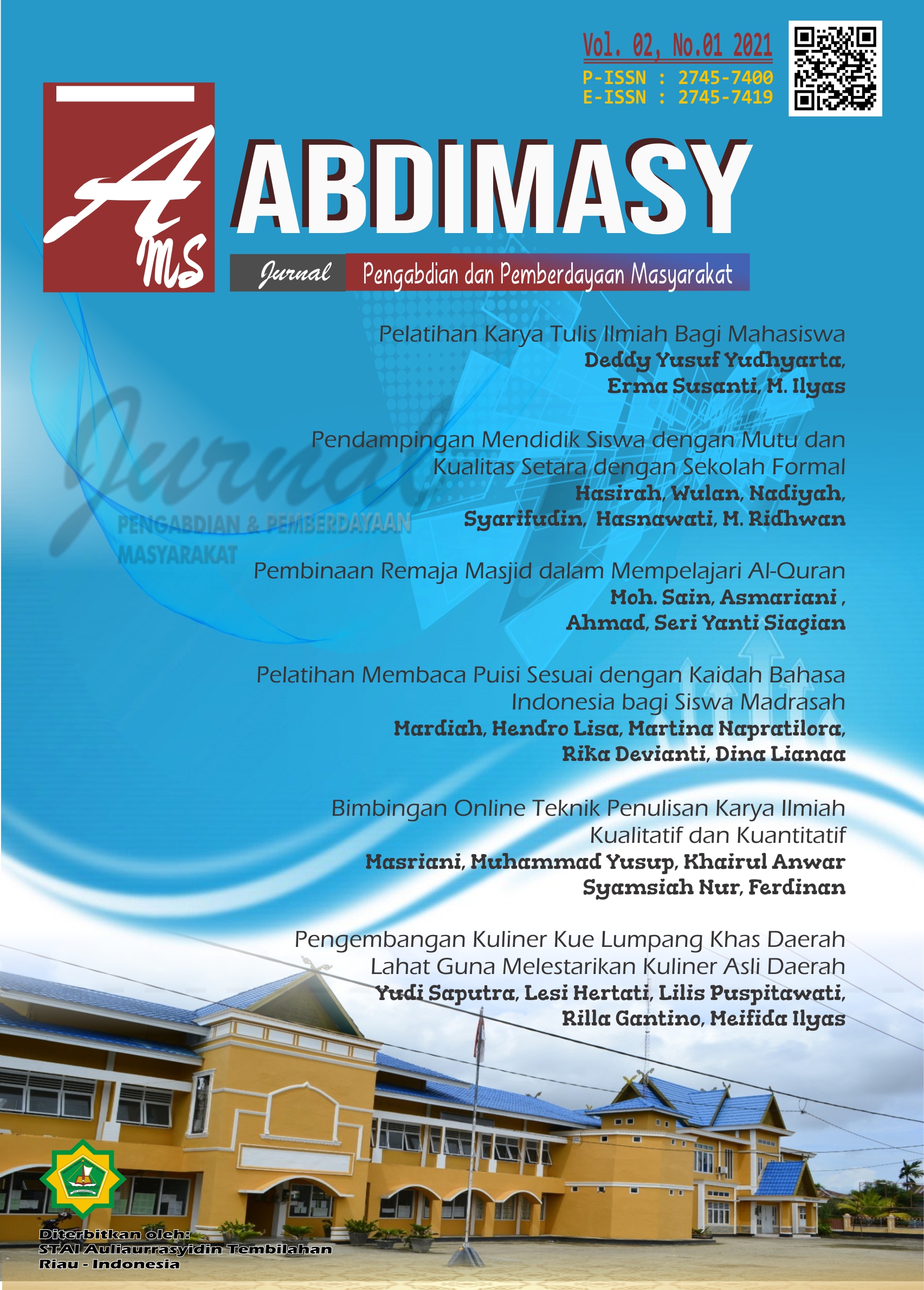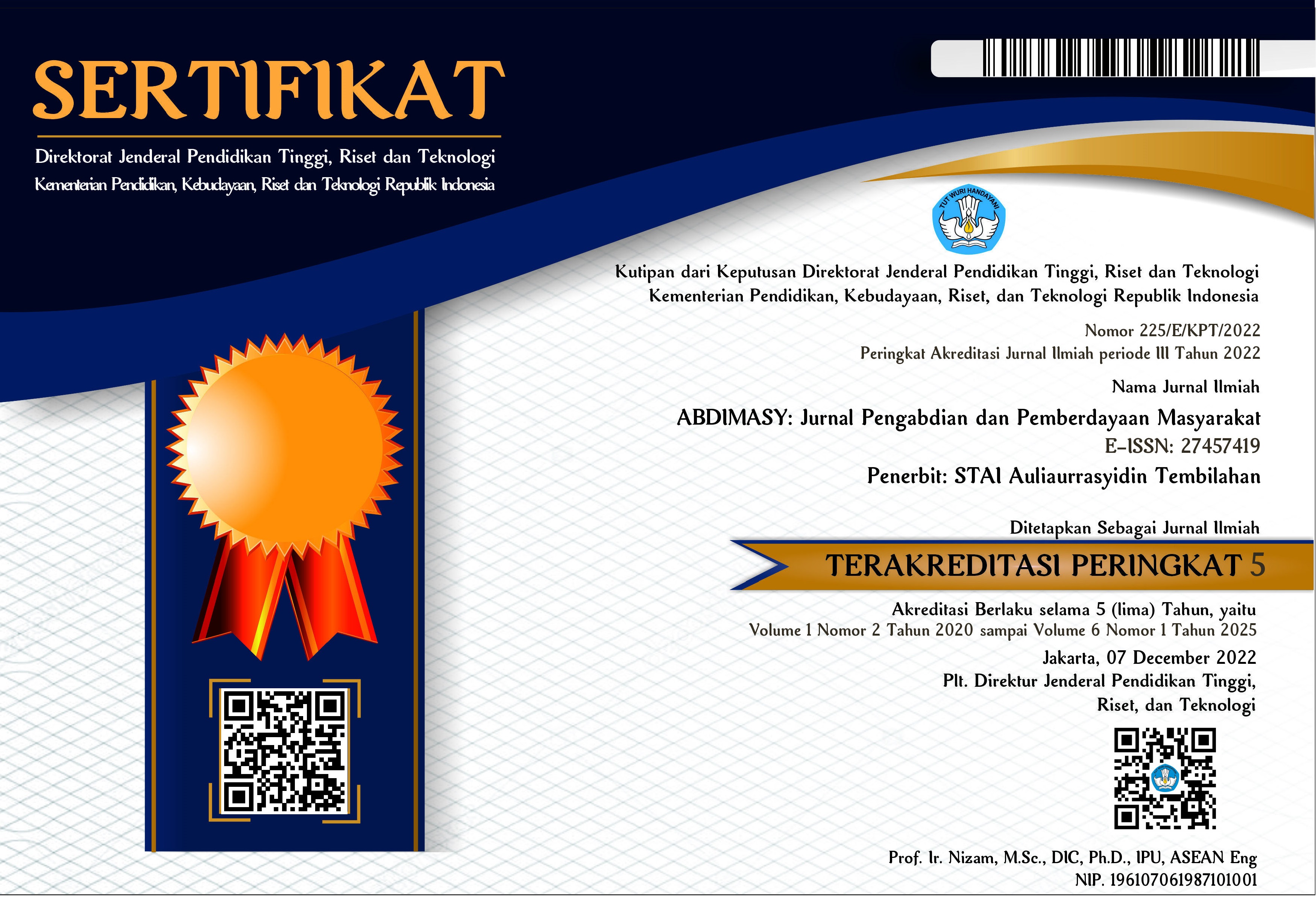Bimbingan Online Teknik Penulisan Karya Ilmiah Kualitatif dan Kuantitatif
DOI:
https://doi.org/10.46963/ams.v2i1.330Keywords:
Writing, Scientific papers, Qualitative, QuantitativeAbstract
This paper described the lecturers' community services in providing an online guidance of qualitative and quantitative research methods at STAI Auliaurrasyidin Tembilahan. This guidance was essential to add insight into scientific writing techniques, especially qualitative and quantitative research. The purpose of this guidance was to make both quantitative and qualitative easier to understand because students will not be away from using these methods. This training was accessible online. This guidance was enthusiastically welcomed by students, both from STAI Auliaurrasyidin Tembilahan and others.
Downloads
References
Arikunto, S. (2010). Prosedur Penelitian Suatu pendekatan Praktek. Jakarta: Rineka Cipta.
Creswell, J. (2015). Riset Pendidikan Perencanaan, Pelaksanaan, dan Evaluasi Riset Kualitatif & Kuantitatif. Jakarta.
Faisal, S. (1999). Format-format Penelitian Sosial. Jakarta: PT Raja Grafindo Persada
Hamidi. (2004). Metode Penelitian Kualitatif: Aplikasi Praktis Pembuatan Proposal dan Laporan Penelitian. Malang: UMM Press.
Lexy J. M. (2019). Metodelogi Penelitian Kualitatif. Bandung: Rosdakarya.
M. Taufiq, A. (2015). Merancang Kuesiner Konsep dan panduan Untuk Penelitian Sikap, Kepribadian & Prilaku. Jakarta: Prenada Group.
Sedarmayanti., Hidayat., Syarifudin. (2011). Metodologi Penelitian. Bandung: CV Mandar Maju
Sugiyono. (2014). Metode Penelitian Kuantitaf kualitatif dan R &D. Jakarta: Alfabeta.
Downloads
Published
Issue
Section
License
Authors who publish with this journal agree to the following terms:
1. Copyright on any article is retained by the author(s).
2. The author grants the journal, right of first publication with the work simultaneously licensed under a Creative Commons Attribution shareAlike 4.0 International License that allows others to share the work with an acknowledgment of the work’s authorship and initial publication in this journal.
3. Authors are able to enter into separate, additional contractual arrangements for the non-exclusive distribution of the journal’s published version of the work (e.g., post it to an institutional repository or publish it in a book), with an acknowledgment of its initial publication in this journal.
4. Authors are permitted and encouraged to post their work online (e.g., in institutional repositories or on their website) prior to and during the submission process, as it can lead to productive exchanges, as well as earlier and greater citation of published work.
5. The article and any associated published material is distributed under the Creative Commons Attribution-ShareAlike 4.0 International License





2.png)



